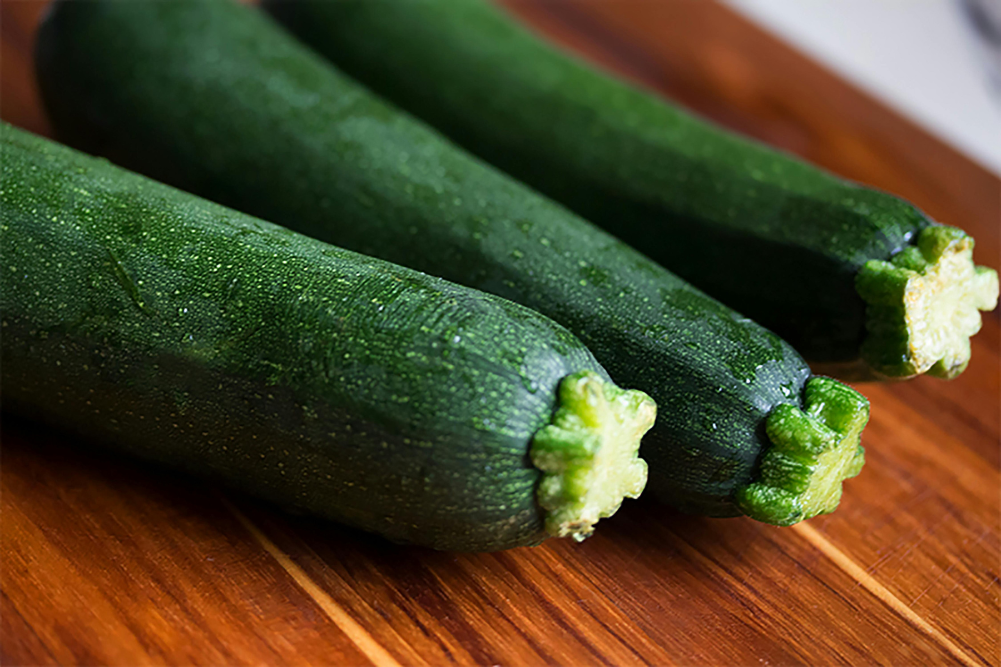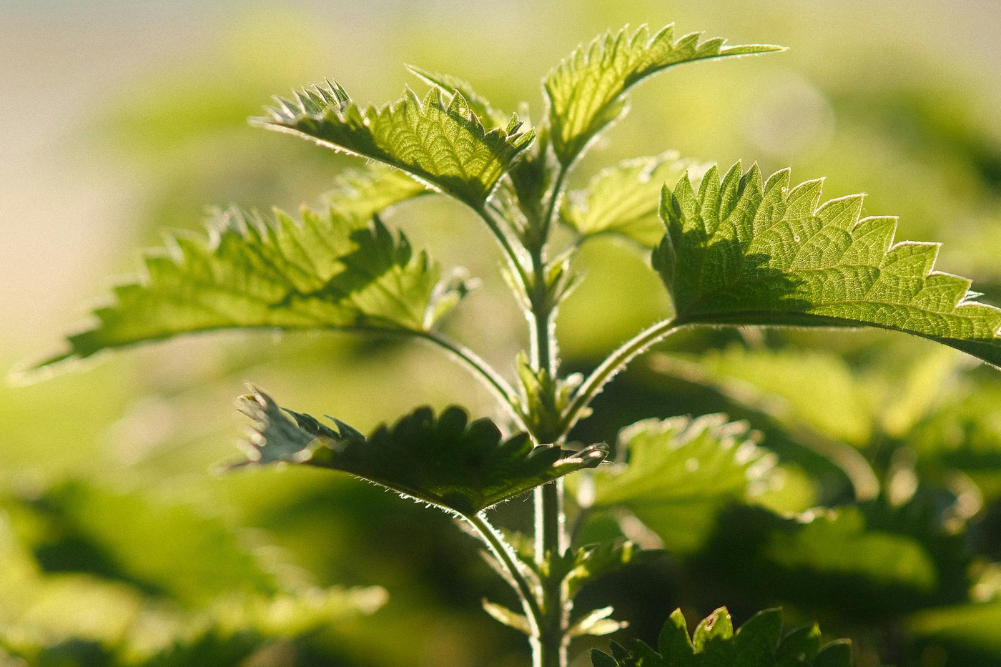The healthy non-toxic kitchen
Along with being the hub and heart of a home, your kitchen can be an unintentional source of daily toxins and chemicals. Here’s how to eliminate them and craft the ultimate low-toxic food prep zone.
Along with the daily meal, many people are unwittingly serving up small amounts of chemicals and heavy metals leached from cooking appliances, utensils, food containers, wrappings and water pipes. As you clean up and cook, you’re also potentially inhaling toxic vapours from stoves and cleaning products. On the upside, as masters of your own domain, you have the power to transition your kitchens into less toxic zones.
Non-toxic cookware
“An important place to start is by ditching non-stick cookware,” says Jo Immig, coordinator of the National Toxics Network in Australia. This includes non-stick woks, frypans, saucepans and baking ware. During cooking, non-stick particles can be scraped and dislodged by utensils into the food we eat, she warns.
“The term ‘non-stick’ actually covers a broad range of proprietary brand coatings with different formulations, including Teflon®,” Immig explains. Virtually all of these contain numerous chemical ingredients bad for your health. Research reported by the Environmental Working Group (EWG) shows heating Teflon at standard cooking temperatures generates highly toxic gases and particles that can kill household birds. An award-winning 2018 documentary, The Devil We Know, links perfluorooctanoic acid (PFOA) and associated chemicals from Teflon to birth defects, kidney and testicular cancer, ulcerative colitis, thyroid disease, pre-eclampsia and high cholesterol. A 2011 study in the Journal of Clinical Endocrinology & Metabolism also implicates the chemical in early menopause.
PFOA was banned in 2015, but if your non-stick cookware is old, it might contain PFOA. There are also many other chemicals to beware of in Teflon, including compounds used as chemical warfare agents. Teflon can also be found on irons and light bulbs, and in cooking tongs, pizza boxes, microwave popcorn bags, polishes, waxes and paints.
Though touted as healthier than Teflon, non-stick ceramic cookware is dubious, given one manufacturer of ceramic non-stick coatings is currently subject to a class action. The glazes used in ceramic items often contain small amounts of lead and other heavy metals. Particularly avoid consuming food from handcrafted, antique and imported ceramics that may have been made without any regulation.
Immig blames our love affair with “non-stick” on convenience, and says you simply need to learn how to cook without it: “Everybody’s been able to cook prior to non-stick pans, right?”
Aluminium cookware is another one to be avoided. Also, watch out for aluminium in camping dishes, aluminium foil and food packaging. Acidic food like tomatoes and higher temperatures accelerate corrosion and leaching.
Immig says the safest cookware is old-fashioned cast iron or stainless steel. Studies have found hard “anodised” aluminium also safe. Unsure if your pot is aluminium or stainless steel? Pressing hard, drag a key along the metal surface. If it’s aluminium it will scratch fairly deeply as aluminium is softer than stainless steel.
Reducing plastic
Harmful chemicals in plastics include bisphenol A (BPA) and hormone-disrupting phthalates. These can leach into food and beverages and into the environment via waste. Chemicals in plastic are linked to many health problems including reproductive issues.
Immig suggests avoiding plastic food packaging by shopping with bulk suppliers using your own bags and containers. Store perishable produce and leftovers in glass storage containers. Other options for storing food include stainless steel, hessian sacks, cloth or paper bags. Instead of cling film, use beeswax wraps. Cull plastic straws, chopping boards and utensils from your kitchen and replace with stainless steel, bamboo or wood versions.
“Reducing plastic and other chemical-laden products in your kitchen also minimises your toxic contribution to the planet through waste,” Immig says.
Non-toxic appliances
Kitchen appliances like breadmakers, rice cookers, popcorn makers, kettles and toasted sandwich and waffle makers commonly harbour hidden plastic, as well as Teflon® and other non-stick coatings. When heated, toxins more readily leach from such materials into foods and drinks.
If you can’t find safer materials for your kitchen gizmos or are on a tight budget, try reverting back to more traditional ways of cookery such as making your own bread by hand. “It’s particularly vital to avoid plastic kettles, given their regular use,” she says. Go for glass or stainless-steel alternatives.
Chemical-free cleaning
“Our fear of bacteria means many of us are going overboard and harming our health with chemical cleaners,” Immig says. A two-decade study by Norway’s University of Bergen found that over the long haul, regular cleaning at home is as impactful on women’s lungs as smoking a pack of cigarettes a day for the same period. The fumes of chlorine bleach, for example, are toxic to the respiratory tract, especially when mixed with other household cleaners, while antibacterial disinfectants and sprays can irritate the airways and cause asthma. Research suggests disinfectants can imbalance the microbiomes of the gut, skin and lungs.
Other harsh and harmful chemicals in cleaning include sodium and potassium hydroxide (found in oven cleaners and Drano), phthalates and formaldehyde (in dishwashing liquid, disinfectants and household cleaning agents), triclosan (in antibacterial liquids) and 2-butoxyethanol (in window cleaners).
“If you pick up any product and it’s got 15 chemicals in it, it’s probably best to leave it alone and go with something more simple,” Immig says. “And if something is requiring lots of instructions in order to use it safely, that’s got to give you a clue that maybe it’s not something you want to use inside your house. Microfibre fabric has actually revolutionised cleaning and we don’t actually need cleaning chemicals.”
Safer scents
Not much beats a clean, fresh-smelling kitchen. However, the artificial fragrances so many people rely on contain numerous synthetic chemicals, including phthalates. According to the EWG, 3163 potential ingredients hide behind the word “fragrance”. Fragrance chemicals are strongly associated with respiratory and skin issues and are among the top five known allergens, the EWG reports.
In the kitchen, fake fragrance routinely makes an appearance in dishwashing liquid, cleaning products, room fresheners and even garbage bags. Instead of fragranced bin liners, use a pedal bin with a kitchen bucket inside. If you want to scent your kitchen, use essential oils.
Purer drinking water
Paul Hervey, a consultant environmental scientist and former professor at Macquarie University, says three additives are legally added to tap water: chlorine (to destroy harmful bacteria), fluoride for dental health and a corrosion control product to minimise pipes corroding and adding contaminates. Water in homes closer to the treatment plant tends to have a higher concentration of chlorine, he says. As the water travels further, the chlorine within it tends to change into gas, evaporate and disappear.
While water is monitored for toxins, Hervey’s research suggests household tap water commonly contains much higher levels of heavy metals, including lead and copper, than previously thought. These “leach into water from taps, pipes, solder and plumbing fittings and fixtures,” he reveals. Those with homes predating 2004 are more at risk. “This is when they reduced the permissible level of lead,” he explains.
Other contaminants in tap water may include chemicals from plastic pipes, tin, zinc, chromium and sometimes lead (from brass alloys in piping).
Hervey advises only ever using the cold water tap for drinking or cooking water: “Most people have a tank hot water system with a copper barrel and an element in the bottom. When the water heats up it interacts with the metal element and the copper drum; we have this magical mix of chemistry then you’ll see this very large spike of copper in the water which is not ideal. You can also end up with a lot of bacteria if it’s not heated to the right temperature.”
Hervey recommends flushing the water out of your cold water tap for 20 to 30 seconds first thing in the morning prior to drinking. This clears water that has been sitting in the plumbing overnight absorbing heavy metals and other things from the internal lining of the pipes.
“There are ways people can treat their own water to the standard or quality they like,” he concludes. He recommends carbon-based water filters that remove 99.9 per cent of pollutants including plastics and heavy metals. “Make sure you keep an eye on the maintenance period and replace cartridges or clean out as per the manufacturer’s instructions.”
Natural insect control
Avoid spraying insecticides in the kitchen or anywhere in the home. “Anything with an aerosol or surface spray is going to drop droplets everywhere,” Immig says.
Even low-toxic insecticides like pyrethroids (synthetic chemicals produced to mimic pyrethrin) have been linked with negative health effects ranging from headaches, ADHD and skin issues to more serious things like Parkinson’s Disease. One study of 500 people published in 2018 found those with multiple sclerosis had higher childhood exposures to indoor insect control foggers and other pesticides than those without the disease.
“If you must use a poison, baits are less dangerous than sprays or bug bombs and can be placed strategically,” Immig says. “Look to the reasons why you might have a cockroach or ant problem and set about solving those, such as vacuuming out cupboards, crack and crevice sealings, storing your food properly.”
Bear in mind that studies such as one published in Scientific Reports in 2019 suggest pesticides are ineffective at eradicating German cockroaches due to their resistance to a variety of insecticides.
Natural commercially available insect measures include sprays made from food-grade D-limonene and pyrethrum (a natural insecticide extracted from chrysanthemum flowers), boric acid and sticky traps. Soapy water or peppermint oil can also kill ants and roaches.
Consider planting catnip outside your house. A study by Iowa State University found the herb repels cockroaches.
Non-toxic decor
A source of chemicals harder to eliminate can relate to structural elements of the kitchen such as cupboards, benches, walls and flooring. The safest materials in terms of outgassing, as well as the most durable, are hardwood timber and stone. They’re also the most expensive.
The majority of kitchen cabinets today are made of engineered wood products including plywood, particle board and MDF. Plastic laminate and melamine are also common. Health concerns relate to outgassing of the chemicals, resins, solvents and adhesives used in the manufacture of such products, and their finishes. This includes formaldehyde, a probable carcinogen which triggers allergic reactions and eye, respiratory and skin irritation in many people.
A 2018 study found finished cabinetry is a major source of PCB emissions in kitchen air, followed by flooring, then painted walls.
When it comes to flooring, Ronny Matzat of the Green Building Institute says timber, stone, cork, linoleum, polished concrete, ceramic and porcelain are low-toxic options. Seagrass and natural fibre mats can be an option. When renovating, use low-toxic surface treatments, sealers, paints and adhesives.
Ventilate
We can’t all afford a total kitchen renovation. The next best thing is to dilute and remove airborne toxins. Do this with good ventilation, open up and air your kitchen regularly, and use the exhaust fans daily.
“Proper ventilation is also important to remove any unhealthy build-up of carbon monoxide gas produced by gas stoves,” Immig adds. “If you have an extractor fan, actually use it to remove products of combustion.” Be aware that faulty appliances can also outgas toxic chemicals.
Microwave safely
While commonly touted as safe, a few studies cast some doubts on the quality of microwaved food. According to the CSIRO, additives in plastics can migrate into your food, while radiation can leak from the edges of damaged or poorly fitting doors. This can occur simply from wear and tear and the seal breaking down over time.
If you must have a microwave, follow all the manufacturer’s instructions and maintain the integrity of the seal by cleaning the oven regularly and avoiding banging the door. Keep your distance when the microwave is on and go into another room. And leave it unplugged when not in use. Microwaves don’t generate radiation when the electrical power is turned off.








